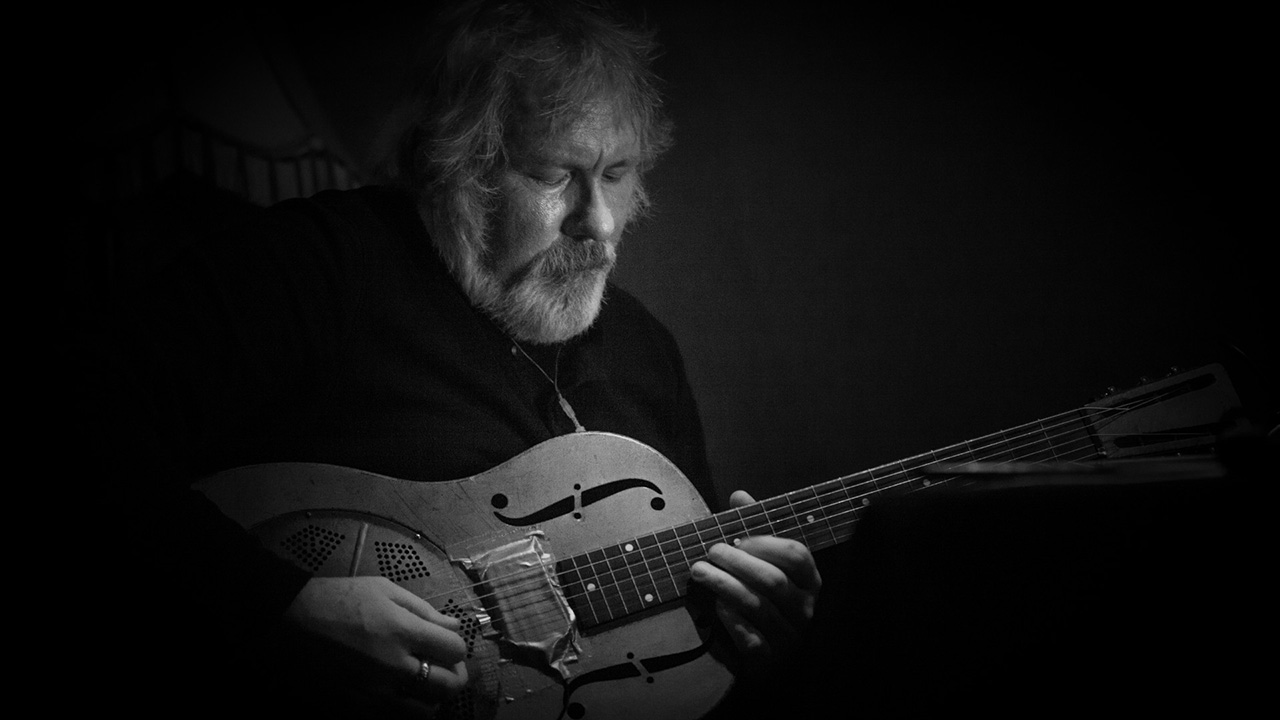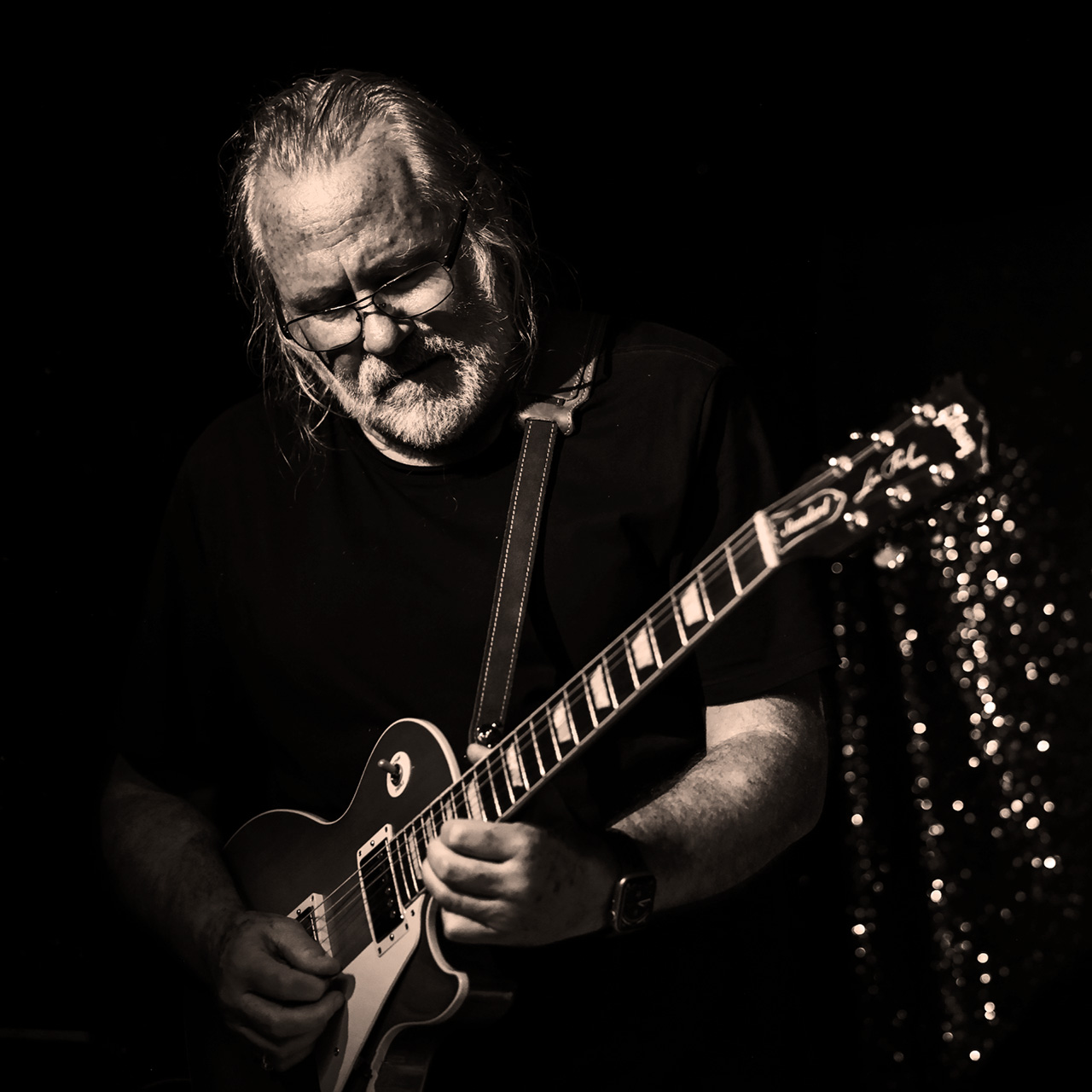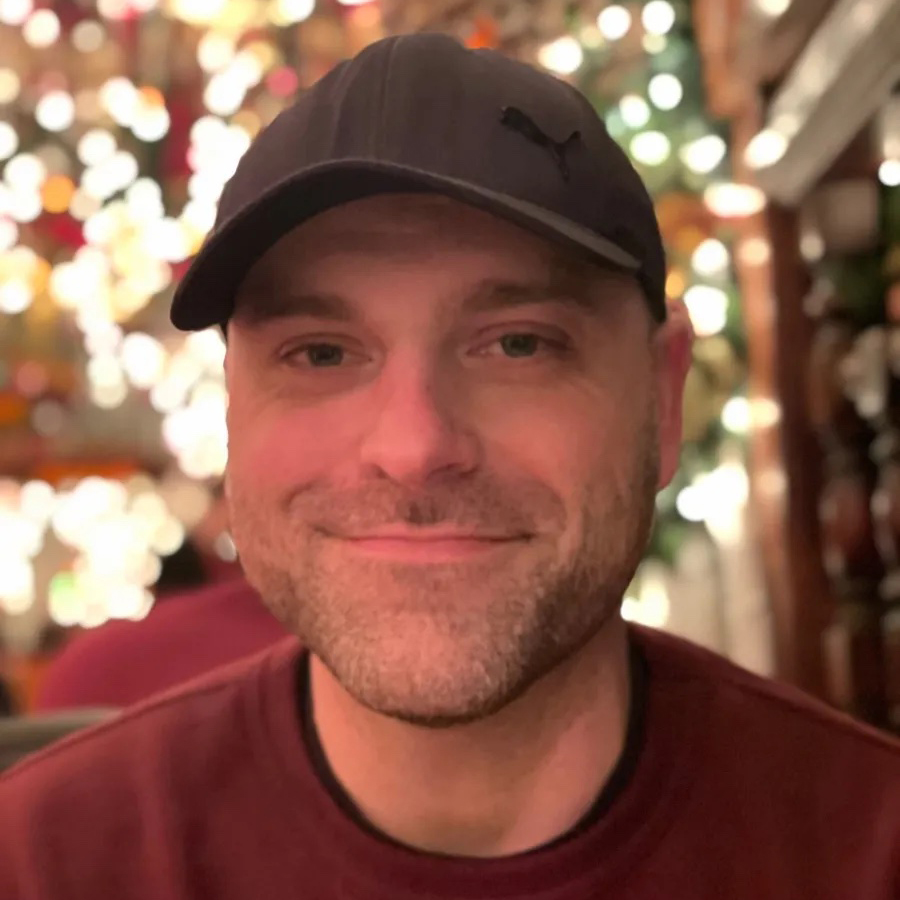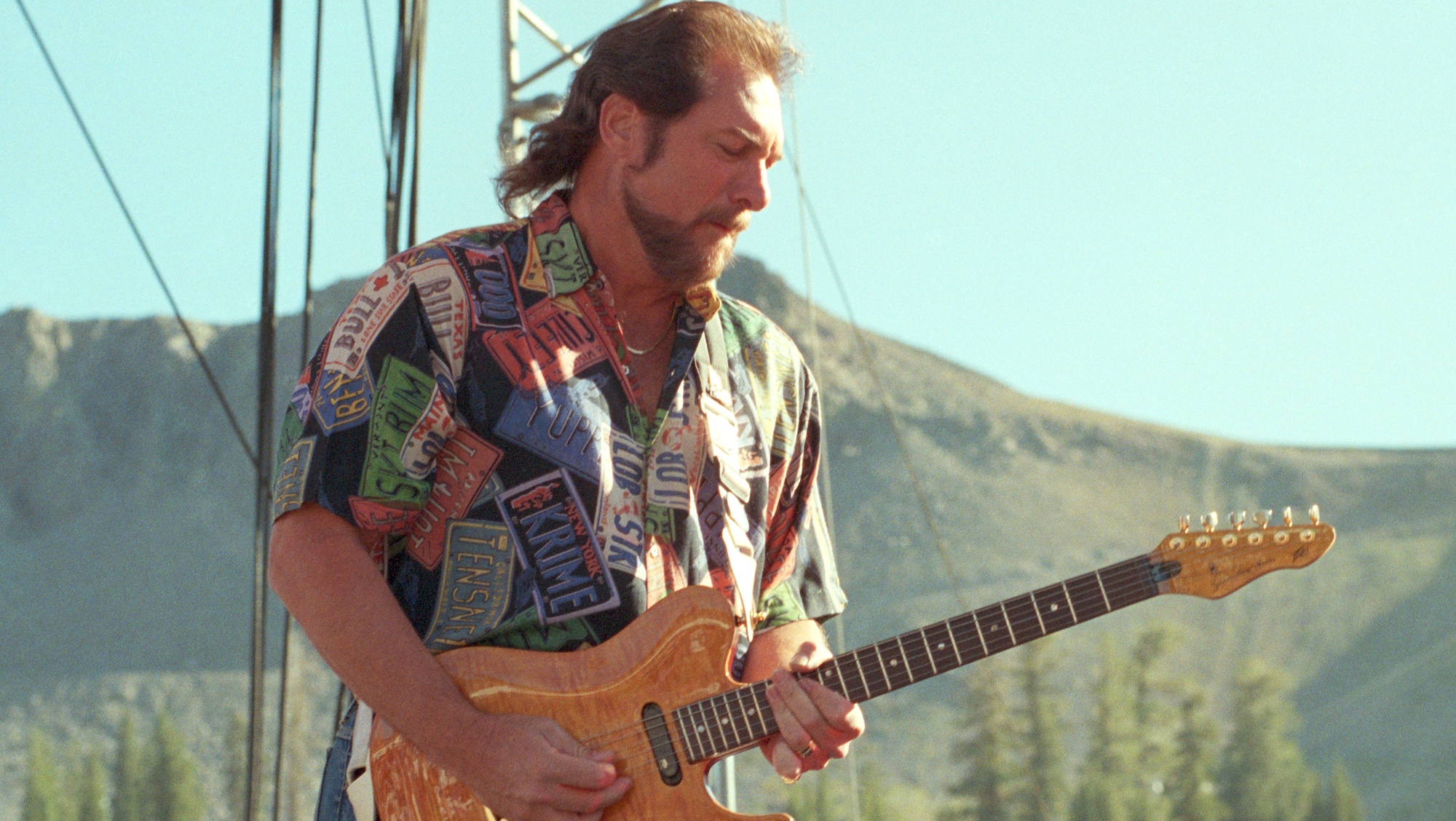“I was playing a gig at CBGB’s Canteen, and Cyndi showed up. She heckled me throughout the show”: Knox Chandler has played with Cyndi Lauper, and been a part of Depeche Mode, Psychedelic Furs, and Siouxsie & the Banshees – now he's going solo
With a wealth of session and gear experience – including a decade-long creative partnership with Cyndi Lauper that got off to a bad start – Chandler’s completed his “streets to streams” debut album, The Sound

Though Knox Chandler has lent his hand to countless sessions, he doesn’t see himself as a session player – but he does say: “It’s been a great opportunity to have worked on a lot of recordings.”
More importantly to him, he’s been a member of Psychedelic Furs, Depeche Mode, and Siouxsie & The Banshees, and he’s also toured with Cyndi Lauper. After 40 years in the business he’s finally released a solo album, The Sound.
“I’ve spent decades developing my voice through other artists,” Chandler says. “I felt it was time to express what I’ve learned. Even though The Sound doesn’t fit with the genres of previous adventures, the aesthetic is there – but developed.”
He admits he’s in foreign territory. “Pride is such a tough word for me. When it’s good, I don’t believe I have anything to do with it. It comes from channeling something much greater than myself, whatever that might be.”
The key to his approach is the avoidance of overthinking.
“I often keep first takes – the first take is a gift. If I continue I’ll turn it into me, often not in a good way. Every track shows different elements of where I’m at in the moment of the environment I’m in.”
At 66, he’s excited about where he’s going, and at peace with where he’s been.
All the latest guitar news, interviews, lessons, reviews, deals and more, direct to your inbox!
“I have no regrets; everything I’ve experienced has led me to where I am today. I’m very happy with that. I’d like to be remembered as someone who continues to explore and learn.”
What led you to the guitar?
“I was about seven or eight and I was leaving a recorder lesson in a church when I heard this most amazing sound. A classical guitarist was practicing in the sanctuary. My mom saw how excited I was and asked him if he taught. So I studied classical guitar for the next couple of years.
“It was the 60s; the electric guitar was new and exciting. I bought an old pre-CBS Fender Mustang when I was 11, with money I made from selling chickens’ eggs. From there, I immersed myself with endless hours of feedback through an old Bogen PA head and a 15-inch speaker.”
What gear did you use while as a session player in New York City?
“My main guitar was a ‘59 Strat, and my amps were a pre-CBS Fender Showman and Vibrolux. My main effect was a TC 2290 digital delay. I used the sends/returns to feed a Jam Man, H3000, and a really cheap Boss reverb, which had the most amazing reverse gate.
“I used a Tech21 Sans Amp classic, a Sans Amp PSA 1, a Marshall Guvnor, a Rat, an MXR Blues Box, and different Boss ODs for gain. I also had an original Digitech Whammy pedal, a Boss Dimension C, and a DOD FX25 in the chain. I was always checking out new stuff, especially Electro-Harmonix boxes.”
You worked with Depeche Mode on their album Exciter. What was that like?
“David Gahan and I spent about four years writing the Paper Monsters album between his recording and touring and my stints with Siouxsie and Cyndi Lauper.
“Depeche Mode were in Electric Lady Studios working on Exciter with Mark Bell. David asked me to come down. Martin Gore wanted a string arrangement, and David recommended me. I wrote it out in Logic, brought in a string quartet, and double-tracked them. I also played some very processed electric cello in the arrangement.”
How did you end up working with Psychedelic Furs?
“I met the band through Gary Windo, with whom I worked during the early '80s. He played on the Forever Now album. He and John Ashton were good friends, so every time they were in town we’d all hang out.
“It was around the fall of ‘88 when I bumped into Richard and Tim Butler in Soho, NY. Richard was working on a solo album and hired me to do some demos. Those demos went on to be part of the Book of Days album. They asked me to join them in London in the spring of '89 for the recording.”
Siouxsie was always pleased with how I played; I think I got good at reading her mind
How did you shape your approach for the gig?
“Mostly I was a second guitarist to John. He has an incredible style, unlike any guitarist I've ever worked with, and I’d just try to fit in between him and the rest of the band. It was like following his lead while trying to connect to everyone else.
“You never knew where John was going, and that was the genius of it. I added another role as a cellist, creating more autonomy, even though I still looked at myself as the glue connecting the parts.”

How about Siouxsie & The Banshees? Was Siouxsie particular about what she wanted from you?
“She was very particular about the sound and volume. I had a MIDI controller connected to the PSA1 with multiple banks holding different gain structures. Each gain structure had about five different volume presets, because certain responses would differ depending on the stage, and her ears were really tuned into that.
“For my first Banshee tour, for [1995's] The Rapture, I had my TC2290 connected to my TC0144 serial remote controller, where I could control the program changes and operate the sends/returns where the PSA1, and the SPX90 – for Peekaboo and Jam Man – were chained in.
“There was a lot to memorize, as well as a tap dance every night. It was very challenging – but I loved it. Siouxsie was always pleased with how I played; I think I got good at reading her mind.”
What was it like recording The Seven Year Itch and Dreamshow with Siouxsie?
“They’re both live performances, mistakes and all. The Seven Year Itch was recorded and filmed at Shepherd's Bush Empire in the middle of the tour. It was just the four of us, so I had to come up with ways to cover the keyboard parts as well as the guitar.
“We went into rehearsals with the Millennium Ensemble for about a week before two shows at the Royal Festival Hall in London, where we filmed and recorded Dreamshow. It was wonderful working with the orchestra – they added another dimension of sound.”
How did you end up recording with Cyndi Lauper?
“She was recording at my friend Sammy Merendino’s studio at the end of the ‘90s. Sammy called me and said she could really use my sounds on it and booked me. I brought my rig, a guitar, and an electric cello.
I was playing a gig at CBGB’s Canteen, and Cyndi showed up. She heckled me throughout the show
“After we’d waited an hour for Cyndi to show up, Sammy suggested I go ahead and try some stuff out. I tracked over several songs. A couple of hours later she arrived, and Sammy told her she needed to hear what I’ve done.
“She immediately freaked out! She said we shouldn’t have touched her music when she wasn’t around. She said, ‘I know exactly what I want him to play,’ and we spent the rest of the session doing exactly that.
“That night, Sammy and I were playing a gig at CBGB’s Canteen, and Cyndi showed up. She heckled me throughout the show. I thought I’d never see her again. A couple of weeks later, she called me – Sammy didn’t wipe my ‘pre-Cyndi showing up’ tracks, and she loved what I had done. She booked me to fly to LA that weekend to do some TV stuff.
“That was the beginning of a 10-year working relationship. Thank you, Sammy! I got along great with Cyndi. She’s a real tough woman who works incredibly hard. I’ve never worked with a singer so devoted to her voice – she really is ‘so unusual.’”
You’re releasing your debut solo album, The Sound. Why now?
“I’ve always wanted to put out something like this. it’s a response to moving back to the States after living in Germany for 10 years. It’s a guitar album, even though I play upright bass and percussion on some of the tracks. There are no samples or synths.
“The tangible product is a book of artwork, photographs, journaling, sketches, and paintings, all documenting the period of recording this album. It’s about my shift from urban to rural inspiration – streets to streams.”
What’s your current rig like?
“I’m using an iPad Class Compliant with either an RME or OMEC interface, packed with a couple of dozen apps. I never use any pre-existing audio, samples, or synths. My pedalboard has an EH Germanium 4 Big Muff PI, Interstellar Octonaut, Red Panda Tensor, Eventide H9, EH Super Ego Plus, Hologram Microcosm, and an Orange Omec.
“I often use the Montreal Assembly 856 and the Count to 5, but the pedal swapping is endless depending on what I’m doing. Either I go direct through a pair of Neve Shelfords, or I use a combination of Fender Rumbles, Princetons, and Deluxes.”
Can you pinpoint who you are as a player today?
“I’m more experimental, diving deeper into improvisation and exploring composition with the rhythms of color and timbre. I got here from just researching and experimenting with processing, as well as some of the spiritual elements of the Native Americans. My exposure and connection to nature have opened a whole new universe to learn from.”
- The Sound is set for release on May 30 – it’s available for pre-order now.
Andrew Daly is an iced-coffee-addicted, oddball Telecaster-playing, alfredo pasta-loving journalist from Long Island, NY, who, in addition to being a contributing writer for Guitar World, scribes for Bass Player, Guitar Player, Guitarist, and MusicRadar. Andrew has interviewed favorites like Ace Frehley, Johnny Marr, Vito Bratta, Bruce Kulick, Joe Perry, Brad Whitford, Tom Morello, Rich Robinson, and Paul Stanley, while his all-time favorite (rhythm player), Keith Richards, continues to elude him.
You must confirm your public display name before commenting
Please logout and then login again, you will then be prompted to enter your display name.





